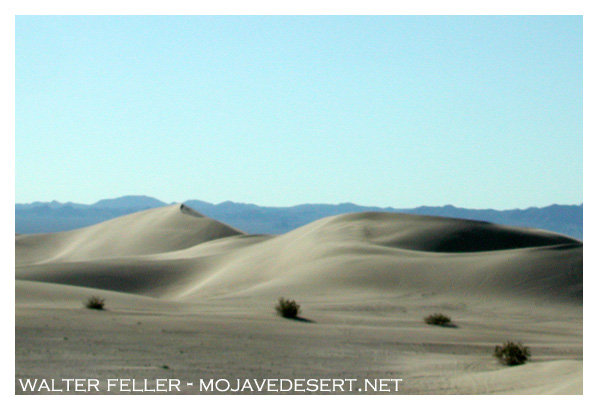Desert Dune

Sand dunes in the desert can absorb and store water like giant sponges. Water rapidly percolates down from the surface, to be retained at depth in the dune. Furthermore, dry sand at the surface acts as mulch, preventing evaporative loss. The dune may also act like a riparian habitat, with water at depth. Plants growing on the dunes need to have deep roots to reach this valuable resource. They must also tolerate the challenges of heat, wind, abrasion, and sand movement. Plants tend to be widely scattered with low cover, except during the rare explosions of wildflowers during years of excessive precipitation. Dune plants include many of those common to other areas of the desert, as well as some found only on the dunes.
Plants found only on sand dunes and sand flats are referred to as psammophytes or psammophytic vegetation. The plants tend to be low-growing herbaceous perennials, including rhizomatous grasses, because woody plants are too stiff and grow too slowly to remain above the shifting sand. Examples of herbaceous perennials common to the dunes are desert sand-verbena (Abronia villosa) and desert evening-primrose (Oenothera deltoidea). Nonetheless, honey mesquite, desert willow, and a variety of other shrubs and small trees do occur sporadically or in dense aggregations on the dunes.
Eureka Dunes are home to three endemic species found nowhere else: Eureka dunes grass (Swallenia alexandrae), Eureka Dunes evening-primrose (Oenothera californica ssp. eurekensis), and Eureka milkvetch (Atriplex lentiginosus var. micans). The Kelso Dunes, the largest dune system in the Mojave Desert, supports 75 indigenous species with several endemics. The Algodones Dunes, largest in the entire United States, host six unique taxa, including Peirsonís milkvetch (Astragulus magdelenae var. peirsonii) (Keeler- Wolf, 2007).
Previous - Next